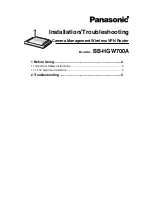
246
To do…
Use the command…
Remarks
Create an SSL client policy and
enter its view
ssl client-policy
policy-name
Required
Specify a PKI domain for the SSL
client policy
pki-domain
domain-name
Optional
No PKI domain is configured by
default.
Specify the preferred cipher suite
for the SSL client policy
prefer-cipher
{
rsa_3des_ede_cbc_sha
|
rsa_aes_128_cbc_sha
|
rsa_aes_256_cbc_sha
|
rsa_des_cbc_sha
|
rsa_rc4_128_md5
|
rsa_rc4_128_sha
}
Optional
rsa_rc4_128_md5
by default
Specify the SSL protocol version
for the SSL client policy
version
{
ssl3.0
|
tls1.0
}
Optional
TLS 1.0 by default
Enable certificate-based SSL
server authentication
server-verify enable
Optional
Enabled by default
NOTE:
If you enable client authentication on the server, you must request a local certificate for the client.
Displaying and maintaining SSL
To do…
Use the command…
Remarks
Display SSL server policy
information
display ssl server-policy
{
policy-
name
|
all
} [
|
{
begin
|
exclude
|
include
}
regular-expression
]
Available in any view
Display SSL client policy
information
display ssl client-policy
{
policy-
name
|
all
} [
|
{
begin
|
exclude
|
include
}
regular-expression
]
Troubleshooting SSL
SSL handshake failure
Symptom
As the SSL server, the device fails to handshake with the SSL client.
Analysis
SSL handshake failure may result from the following causes:
The SSL client is configured to authenticate the SSL server, but the SSL server has no certificate or the
certificate is not trusted.
The SSL server is configured to authenticate the SSL client, but the SSL client has no certificate or the
certificate is not trusted.
















































